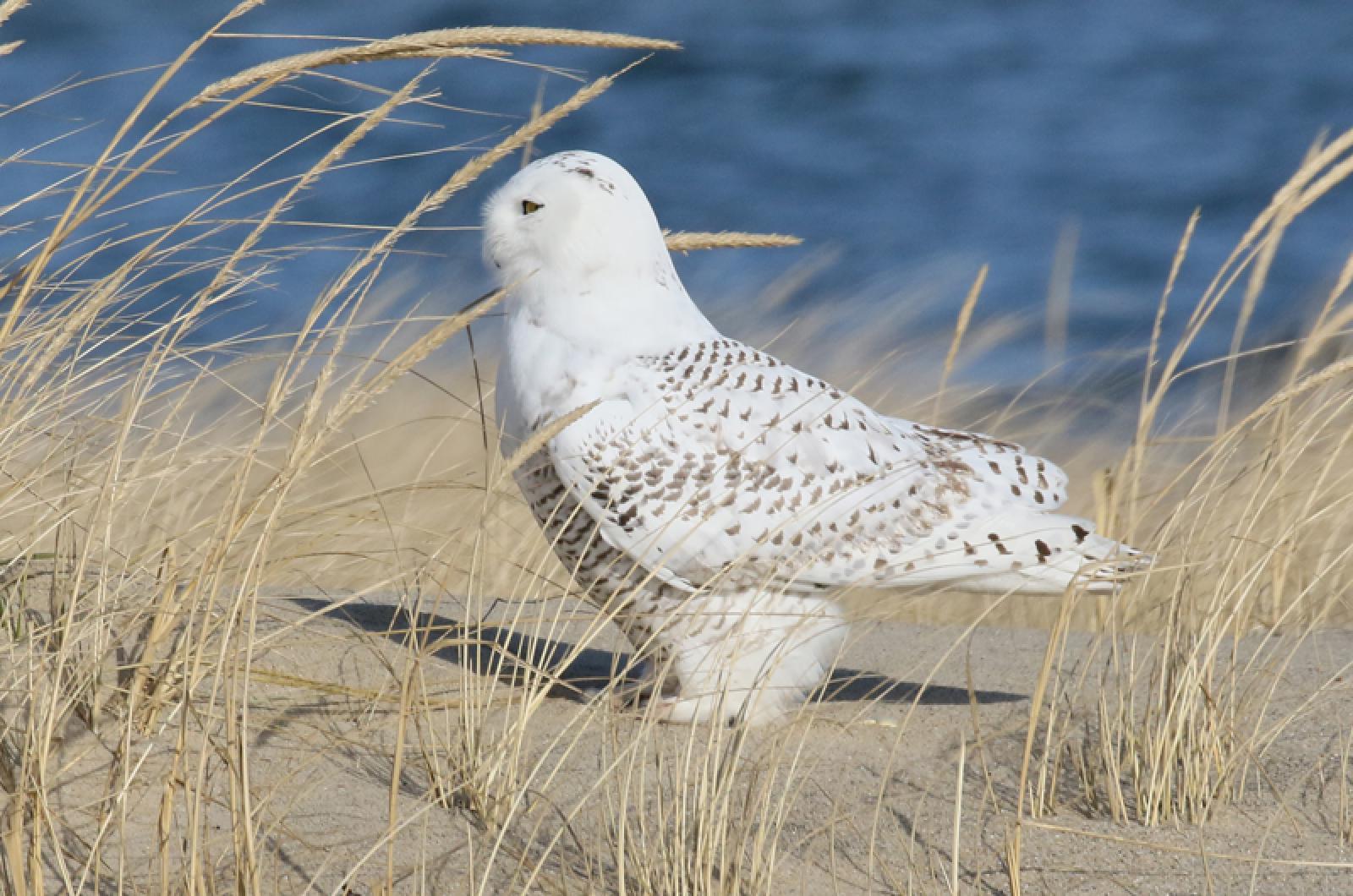Snowy owls need no introduction.
They are big, white and fabulously feathered (even their feet), and have captured the Island’s attention. In fact, snowy owls are one of the few birds that can entice a non-birder to go birding.
It is easy to understand why. Author J.K. Rowling considered snowy owls to be ”the most beautiful owl of all,” and used this iconic species in her Harry Potter book series, thus introducing a whole new generation to the magic of snowy owls. Hedwig is Harry Potter’s avian companion and mail messenger, and easily charmed both the book’s wizards and readers for her loyalty, friendship and intelligence.
But birders, who tend to be very observant, can also be sticklers for accuracy. While Hedwig is referred to as a she, the birds that play her in the movies are all male.
One can differentiate male from female snowy owls by size and coloring. Females are bigger and tend to have a more salt and pepper appearance, while the smaller males are whiter and will get whiter as they age. It makes sense that male birds were used in the film since their size makes them a bit easier to manage.
A small snowy owl is still a big bird. Snowy owls are the heaviest North American owls, weighing four to six pounds and measuring 20-28 inches long with a wingspan of up to five feet.
Snowy owls are diurnal (active during the day), and generally hunt by watching and waiting for their prey. Being large birds, they need a lot of food to keep them going. In the Arctic, their favored food is lemmings and other rodents, of which an individual snowy owl can consume up to a dozen per day. Here, they are likely eating waterfowl, small mammals and fish, and even will consume carrion. Like most owls, they regurgitate pellets, but when they eat larger prey, this is not always the case.
These owls show up here periodically, in some winters, depending on conditions at their Arctic home. Snowy owls breed in the Arctic on the treeless tundra and winter in Canada and the northern U.S. They are considered an irruptive species, meaning that they appear in our area, and southward, in some winters but not others.
When they do come for a visit, they seek out open landscapes of sparsely vegetated beaches and fields similar to their Arctic breeding grounds. Chappy beaches, State Beach, and Quansoo have had reports of snowy owls this year.
The sharing of the location of sightings for these birds always gives me pause. One of the biggest local threats to these animals is their popularity. Folks have been flocking to these beaches to try to get a glimpse (and a photo) of these stunning birds, and may inadvertently be causing them harm.
It is best to give these owls lots of space and observe their behavior for any hint of disturbance. Fidgeting, head bobbing and changing position are signs of discomfort that mean you are likely observing the bird too closely. If the owl is flushed (flies off) in response to your presence or movement, you are definitely too close. Back off for their safety. A photo, no matter how great, is not worth harming these breathtaking animals.
These owls need all the help they can get. Accurate population numbers of snowy owls can be difficult to ascertain and their populations can greatly fluctuate. Although they were previously considered a species of limited concern, the International Union for Conservation of Nature, which maintains a list of the conservation status globally of species, recently changed their classification to vulnerable and notes a trending down of snowy owl populations worldwide.
The Vineyard is famous for letting its notable seasonal visitors, and all others, enjoy their trip to the Island without being unnecessarily bothered. Let’s extend the same courtesy to this very special species.
Suzan Bellincampi is director of the Felix Neck Wildlife Sanctuary in Edgartown, and author of Martha’s Vineyard: A Field Guide to Island Nature.







Comments (1)
Comments
Comment policy »